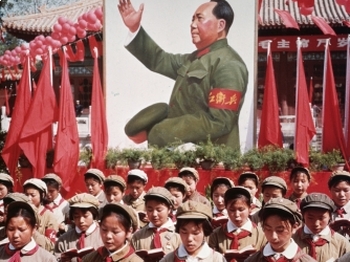Red Scarf Girl by Ji-Li Jiang Reading Comprehension Guided Assignment GOOGLE DOC
- Google Docs™

Description
This is such a great book to introduce students to the Chinese Cultural Revolution and Communism, and China in general!
This guided reading assignment breaks the story into 5 reading sections (or five weeks), with comprehension questions (short answer - not multiple choice) and vocabulary terms key to the reading (these are taken from the appendix). Complete answer keys are provided. There is an optional assignment to complete an in-class writing assignment (may be given as a homework assignment) after completing the entire book. There are two prompts to choose from.
The document is setup for students to answer the questions directly on the document and is easily printed and organized for photocopying, and includes simple scoring rubrics and point totals for grading.
Below is a breakdown of the reading assignments and pacing:
5 weeks total (Approx. 10 pages per school day)
Recommended pre-reading in class – Note To Reader, Note on Pronunciation, Forward, and Prologue
Assignments:
Week 1 (pg: 3-51): 1. The Liberation Army Dancer, 2. Destroy the Four Olds, 3. Writing Da-zi-bao
Vocabulary pg. 273-275: 1) capitalism, 2) communism, 3) Beijing, 4) bourgeois, 5) conservative, 6) counterrevolutionary, 7) Chinese New Year, 8) class status, 9) acupuncture, 10) Allah
Week 2 (pg: 52 - 99): 4. Red Successors, 5. Graduation, 6. The Sound of the Drums and Gongs
Vocabulary pg. 276-278: 1) da-dui-zhang, 2) da-zi-bao, 3) detainment, 4) exploitation, 5) fen, 6) feudalism, 7) four olds, 8) five black categories, 9) ideology, and 10) individualist
Week 3 (pg 100 – 155): 7. The Propaganda Wall, 8. A Search in Passing, 9. Fate
Vocabulary: 279 – 281: 1) Mandarin, 2) Nanjing, 3) pedicab, 4) political study class, 5) Precious Red Book, 6) proletarian, 7) propaganda, 8) reactionary, 9) Rebel, 10) red
Week 4 (pg. 156-205): 10. Junior High School at Last, 11. Locked Up, 12. An Educable Child
Vocabulary: 282 – 283 1) Red Guard, 2) Red Successors, 3) revisionist, 4) remold one’s ideology, 5) reincarnation, 6) rightist, 7) Revolutionary Committee 8) Shanghai 9) socialism, 10) struggle meeting
Week 5 (206 – 273): 13. Half-City Jiangs, 14. The Class Education Exhibition, 15. The Rice Harvest, 16. The Incriminating Letter, 17. Sweeping, Epilogue.
Vocabulary: 284-285 1) study group, 2) summer labor, 3) telephone kiosk, 4) Aunt, Uncle, 5) xenophile, 6) yin-yang hairdo, 7) Young Pioneers, 8) Yuan


